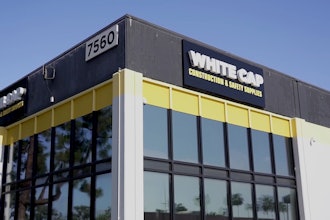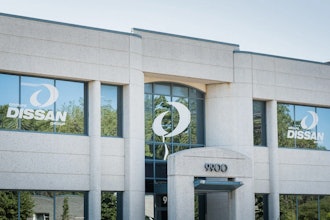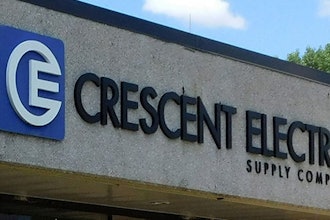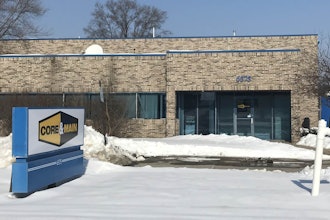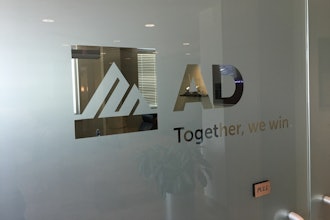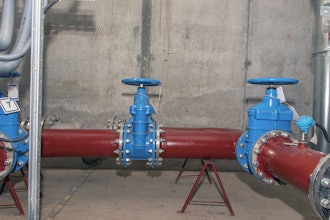
In previous STAFDA Advisories, the concept of safety stock was introduced in determining the order point, a parameter defining when a product should be reordered. Safety stock provides protection against stockouts due to unexpected demand for a product or delays in receiving a replenishment shipment from a supplier. If a company maintains more safety stock in inventory, it provides more protection against stockouts. However, this additional inventory will have a negative effect on profitability.
Calculate adjusted margin using the following formula:
- Annual Sales Dollars - Annual Cost of Goods Sold - (Average Inventory Value X Carrying Cost %) / Annual Sales Dollars
This metric subtracts the cost of carrying the average inventory value in an item from the annual average profits (i.e., Annual Sales Dollars – Annual Cost of Goods Sold) and divides the result by Annual Sales Dollars. At what point is the adjusted margin so low the company is losing money?
The answer is simple if you employ another measurement — the NIREP. NIREP stands for “Non-Inventory Related Expense Percentage.” The NIREP is calculated with this formula:
- Annual Non-Inventory Related Expenses / Total Annual Sales
Annual Non-Inventory Related Expenses are comprised of expenses incurred other than those included in the carrying cost of inventory. The NIREP includes all selling, marketing, and administrative costs. Typical NIREP are between 7 and 9 percent. Every expense from the profit and loss statement (also known as an income statement) is included in either the carrying cost or NIREP. To correctly perform this analysis, every expense must be classified into one of these two categories. Please don’t confuse the NIREP with the operating expense as a percentage of sales. The latter measurement includes the expenses that make up the carrying cost of inventory.
The adjusted margin-NIREP comparison is used to divide inventory into three groups for profitability analysis:
- Good Inventory – The company makes money when this product is sold.
- Bad Inventory – The company loses money when this product is sold. But when its sales are combined with complementary items or other sales, the result is a profitable situation.
- Ugly Inventory – The company loses money when this product is sold and it doesn’t lead to any other profitable sales.
The NIREP represents a company’s “break even” point. If the adjusted margin is 14 percent and the NIREP is 7 percent, it’s making money. If the NIREP is higher than the adjusted margin, it’s losing money and looking at either “bad” or “ugly” inventory.
Is It Bad or Ugly?
If an item’s adjusted margin doesn’t exceed the NIREP for the warehouse or company, it’s not profitable. But someone might say, “If we didn’t carry this item we wouldn’t be able to sell this other product.” For example, a variety of repair parts might need to be stocked to sell a large, profitable piece of equipment. But how does one objectively evaluate this situation? Combine the profit dollars, cost of carrying inventory, and sales dollars of the suspected bad/ugly item with the supposedly profitable item or product line it supports.
Let’s look at an example. A company carries a part (#A100) required to support the sales of another item, the #B500 unit. If needed, the #A100 must be available for immediate delivery. Unfortunately, the company must order the #A100 in a large package quantity, which results in a large average inventory of the product in the warehouse and a low adjusted margin:
| Part #A100 | |
|---|---|
| Annual Sales $ | $500 |
| Annual Cost of Goods Sold $ | $400 |
| Average Inventory $ | $450 |
| Annual Cost of Carrying Inventory | 20% |
| Adjusted Margin = [($500 - $400) - (.20 x $450)] / $500 = 2% | |
This is far lower than the company’s NIREP of 7%. But is it bad or ugly inventory? Are profits of the #B500 unit strong enough to carry the money-losing #A100? Here is the relevant data for the #B500:
| Part #B500 | |
|---|---|
| Annual Sales $ | $50,000 |
| Annual Cost of Goods Sold $ | $42,500 |
| Average Inventory $ | $5,000 |
| Annual Cost of Carrying Inventory | 20% |
Combine the data for both items to calculate a combined adjusted margin:
| Annual Sales $ | $50,500 |
| Annual Cost of Goods Sold $ | $42,900 |
| Average Inventory $ | $5,450 |
| Annual Cost of Carrying Inventory | 20% |
| Adjusted Margin = [($50,000 - $42,900) - (.20 x $5,450)] / $50,500 = 12.9% | |
Because the combined adjusted margin (12.9 percent) is greater than the company’s NIREP (7 percent), the unprofitable item is considered “bad inventory.” While the company loses money on that product, it leads to other profitable sales. If the combined adjusted margin for the two items was less than the NIREP, the item would be classified as “ugly” inventory.
But what if a salesperson, when confronted with a money-losing item he/she insisted be stocked said, “If we don’t carry that product we will lose ABC Corporation’s business?” Check to see if ABC Corporation’s profits are large enough to compensate for the losses on that item. Again, let’s look at an example:
“ABC Corporation is considered to be a good customer. They buy $100,000 dollars’ worth of material from our company each year at a 15% gross margin. That results in $15,000 gross profit dollars. But over time, our company has accumulated an average inventory of $50,000 stocked specifically for ABC Corporation. Much of this customer-specific inventory resulted from customer requests given to our salesperson. The salesperson was paid on gross margin. Additional inventory didn’t affect him. In fact, it built additional sales. As a result, the salesperson received additional commissions while excess inventory accumulated.”
What would the adjusted margin be in this situation?
| Annual Sales $ | $100,000 |
| Annual Cost of Goods Sold $ | $85,000 |
| Average Inventory $ | $50,000 |
| Annual Cost of Carrying Inventory | 20% |
| Adjusted Margin = [($100,000 - $85,000) - (.20 x $50,000)] / $100,00 = 5% | |
The company’s NIREP was 7.9 percent — significantly above the adjusted margin. This was not a profitable situation. Management met with the salesperson and explained either they had to substantially raise the gross margin percentage or substantially reduce the customer-specific inventory to eliminate this “ugly” situation. Be sure everyone in the company understands the difference between good, bad, and ugly inventory!
| The Good, The Bad & The Ugly |
|---|
| Good Inventory: Adjusted margin > NIREP |
| Bad Inventory: NIREP > Adjusted margin, and sale of this inventory leads to other profitable sales |
| Ugly Inventory: NIREP > Adjusted margin, and sale of this inventory does not lead to other profitable sales |
 Jon Schreibfeder, President of Effective Inventory Management
Jon Schreibfeder, President of Effective Inventory ManagementJon Schreibfeder is president of Effective Inventory Management, based in Coppell, TX. He grew up in his family’s pipe, valve, and fitting supply house and has more than 30 years of inventory consulting experience. He has also designed several inventory management computer systems and authored STAFDA’s Effective Supply Management manual. Jon regularly participates in STAFDA’s Consultants Pavilion at the association's annual convention. He provides STAFDA members with 30 minutes of free phone time or email consultation per year to answer inventory-related questions. Be sure to identify yourself as a STAFDA member when contacting him. Reach Jon at [email protected], 972/304-3325, or www.effectiveinventory.com.
This article was originally posted in STAFDA's Members-only Advisory section












